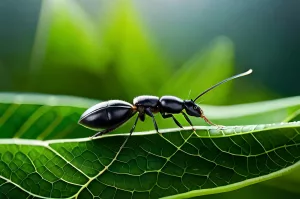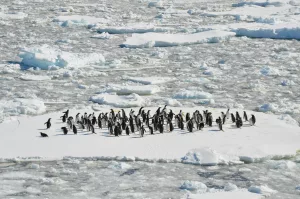How Do Vultures Find Food?
Vultures are remarkable scavengers that play a crucial role in ecosystems by efficiently recycling nutrients. To find food, vultures primarily rely on their keen sense of sight rather than smell. This ability to spot their meals from great distances is an incredible adaptation that allows them to cover large territories with precision and accuracy. Beyond their visual prowess, vultures employ a range of strategies and adaptations that contribute to their success as nature’s clean-up crew.
Visual Scanning
Vultures soar high in the sky, scanning the ground for any signs of potential food sources. Their excellent eyesight allows them to spot even the smallest movements from great distances. Once they detect a potential meal, vultures descend for a closer look. This visual scanning is akin to having a bird’s-eye view, literally, of their environment, enabling them to seek out carrion efficiently.
Case Study: The Griffon Vulture
The Griffon vulture, native to parts of Europe and Asia, is known for its exceptional eyesight. It can spot a two-centimeter object from a kilometer away. This acute vision helps the Griffon vulture efficiently locate carcasses in the rocky terrains of the Mediterranean regions. Observing these vultures in action is like watching a masterful aerial surveyor at work, as they glide effortlessly over diverse landscapes.
Practical Insight: Birdwatching Tips
For those interested in observing vultures in their natural habitat, consider visiting open areas with clear skies. Bring binoculars to better appreciate their flight techniques and look for them during the morning hours when they are most active in their search for food.
Following Other Birds
Vultures also utilize social cues from other birds, such as eagles or smaller scavengers, to locate carrion. By observing the behavior of these birds, vultures can quickly pinpoint the location of a carcass. Following other birds in search of food is a strategy that enhances the vulture’s foraging efficiency. This behavior allows vultures to benefit from the keen senses and local knowledge of other scavengers, reducing the time and energy spent in locating food independently.
Practical Example: Cross-Species Collaboration
In the African savannah, vultures like to shadow larger predators such as lions or hyenas. By staying close but not too close, they can swoop in once the predators have finished their meal. This method not only saves energy but also ensures a reliable food source. Imagine a patient diner waiting for the buffet to open; vultures embody this strategic patience in the wild.
Learning from the Best: Observational Skills
Vultures’ ability to learn from other birds is a testament to their adaptability. For instance, by watching the flight patterns of other scavengers, vultures can gauge the freshness of a carcass, ensuring they arrive in time to feast without excessive competition.
Olfactory Detection
While vultures are not known for their sense of smell compared to other scavengers like hyenas, recent studies suggest that some species of vultures may use olfactory cues to locate food in certain environments. However, vision remains their dominant sense for foraging. Although olfactory detection is not a primary method of locating food for vultures, their potential ability to use scent cues highlights the complexity of their sensory capabilities and adaptability to different environmental conditions.
Research Insight: The Turkey Vulture
The Turkey vulture, prevalent in North America, has shown an unexpected proficiency in olfactory detection. Research indicates that they can detect ethyl mercaptan, a gas produced by decaying matter, from over a mile away. This ability is unique among vultures and has reshaped our understanding of their sensory adaptations. Picture a natural gas leak detector in the sky, capable of honing in on hidden food sources with uncanny accuracy.
Practical Consideration: Scent Trails
For vulture enthusiasts, understanding the role of scent in food detection can add a layer of appreciation for these birds’ foraging techniques. Consider how changes in wind direction might influence a vulture’s ability to detect scents and how this might affect their flight paths.
Teamwork and Scavenging Strategies
Vultures often exhibit communal foraging behavior, working together to access and consume large carcasses efficiently. Some species, like the Andean condor, may engage in competitive feeding hierarchies to maximize their food intake. By working collaboratively, vultures can overcome challenges associated with scavenging, such as breaking through tough hides or accessing hard-to-reach parts of a carcass. This cooperative behavior not only improves their feeding success but also fosters social bonds within vulture communities.
Example: The Andean Condor
The Andean condor is a master of teamwork. These birds often work in pairs or small groups to tackle large carcasses. By taking turns to feed and standing guard, they minimize the risk of losing their meal to other scavengers. This strategy not only ensures a full belly but also strengthens social ties. Visualize a synchronized dance, each vulture playing its part in a choreographed routine to maximize their meal.
Group Dynamics: Understanding Vulture Hierarchies
In many vulture species, social structures play a crucial role in feeding dynamics. Dominant individuals may feed first, while others wait their turn. Understanding these hierarchies can provide insights into the social lives of vultures and the importance of cooperation in their survival.
Environmental Factors
Environmental conditions, such as wind patterns and topography, can also influence how vultures find food. Thermal air currents help vultures stay aloft while searching for carrion, and knowledge of favorable habitats is crucial for their survival. Additionally, vultures are adept at utilizing updrafts and thermals to conserve energy during flight, allowing them to cover more ground efficiently. Understanding these environmental factors is essential for vultures to optimize their foraging efforts and ensure their long-term viability in diverse landscapes.
Practical Tips: Navigating Thermals
Vultures are experts at finding and riding thermals—columns of rising warm air. This skill allows them to soar effortlessly and cover vast distances without expending much energy. In areas like the Grand Canyon, vultures can travel up to 200 miles in a single day by harnessing these natural air currents. For aspiring birdwatchers, understanding how to identify potential thermal hotspots can enhance your chances of spotting vultures in flight.
Adapting to Climate: Seasonal Changes
Vultures must also adapt to seasonal changes in their environment. In colder months, when thermals are less prevalent, they may rely more heavily on social cues and other strategies to find food. This adaptability is crucial for their survival across diverse habitats.
Role in Ecosystems
Vultures play a pivotal role in maintaining the balance of ecosystems. By efficiently removing carcasses, they prevent the spread of diseases that could affect other wildlife and even humans. Their scavenging activities recycle nutrients back into the ecosystem, supporting plant growth and sustaining the food chain.
Impact Study: Ecosystem Health
In India, a drastic decline in vulture populations has led to increased carcasses left to rot, contributing to the spread of diseases such as rabies. This situation underscores the critical role vultures play in public health and environmental stability. Conservation efforts are now focused on reviving vulture numbers to restore balance. It’s like the domino effect in action; the absence of vultures sets off a chain reaction that disrupts entire ecosystems.
Ecosystem Engineers: Nutrient Cycling
By breaking down carcasses, vultures facilitate nutrient cycling, which in turn supports plant growth. This process is crucial in nutrient-poor ecosystems, where vultures’ role as recyclers helps maintain ecological balance.
Conservation Challenges
Despite their importance, vultures face numerous threats, including habitat loss, poisoning, and human-wildlife conflict. Conservation efforts are crucial to ensure their survival and the health of ecosystems that depend on them.
Actionable Steps: Protecting Vultures
- Education and Awareness: Educating communities about the importance of vultures and the dangers of using poisons can reduce the risk of accidental killings. Share stories and data that highlight the ecological benefits of vultures to foster a culture of appreciation and protection.
- Protected Areas: Establishing vulture-safe zones can help preserve their natural habitats and provide safe feeding grounds. These zones act as sanctuaries, where vultures can thrive without the looming threats of human interference.
- Legislation: Enforcing strict regulations against the use of harmful pesticides and drugs that can poison vultures is vital. Encouraging policymakers to implement and uphold these laws is essential for long-term conservation success.
Community Involvement: Grassroots Efforts
Grassroots initiatives can play a significant role in vulture conservation. Local communities can participate in monitoring programs, habitat restoration projects, and initiatives that promote sustainable practices, creating a network of vulture-friendly environments.
Innovative Research and Technology
Advancements in technology and research are opening new avenues for understanding vulture behavior and improving conservation efforts.
Technological Innovations: GPS Tracking
Modern GPS tracking devices are being used to monitor vulture movements and behavior in real time. This data helps researchers understand their foraging patterns, migration routes, and breeding habits, allowing for more effective conservation strategies. Imagine a high-tech detective following the clues laid out by vultures as they traverse vast landscapes.
Data-Driven Conservation: Impactful Insights
By analyzing GPS data, researchers can identify critical habitats and migration corridors that require protection. This approach enables targeted conservation efforts that address the specific needs of vulture populations, maximizing impact and resource allocation.
Vultures in Culture
Vultures hold significant cultural importance in many societies, often symbolizing renewal and the cycle of life and death.
Cultural Significance: Vultures in Mythology
In ancient Egyptian mythology, vultures were associated with Nekhbet, the goddess of protection. They were revered as symbols of motherhood and protection, highlighting their role in both the natural and spiritual worlds. This cultural reverence reflects a deep understanding of vultures’ ecological significance, which resonates across time and geography.
Symbolism Across Cultures: Diverse Perspectives
Beyond Egypt, vultures appear in the folklore and traditions of various cultures worldwide. In some Native American tribes, vultures are seen as cleansers and symbols of transformation, further emphasizing their integral role in life cycles.
The future of vultures hinges on our ability to appreciate their ecological value and implement effective conservation strategies. By embracing innovative research, fostering community involvement, and promoting cultural awareness, we can ensure that these remarkable scavengers continue to fulfill their critical roles in ecosystems for generations to come.


